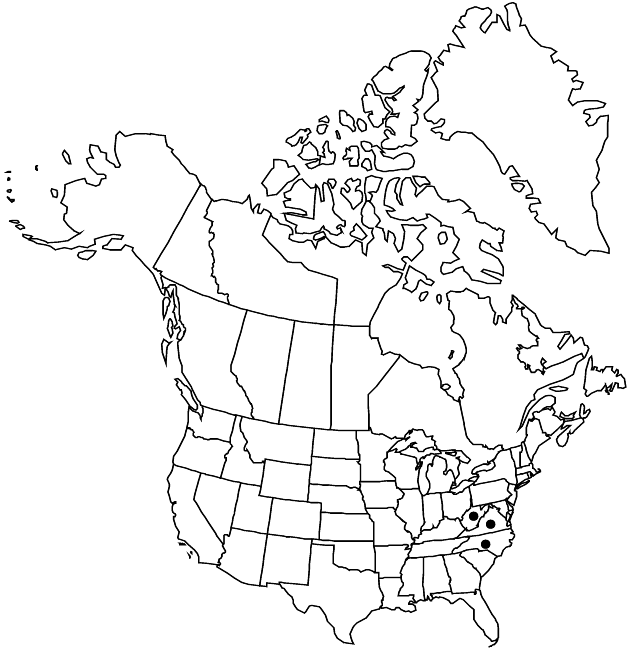Liatris helleri
Bull. Torrey Bot. Club 18: 147. 1891.
Plants 15–55 cm. Corms globose (sometimes knotty). Stems glabrous. Leaves: basal and proximal cauline 1-nerved, spatulate-oblanceolate to narrowly lanceolate or oblanceolate-linear, (50–) 60–100 (–220) × 3–8 (–15) mm (usually reaching at least level of heads), quickly to gradually reduced distal to midstems, essentially glabrous or sparsely pilose (abaxially), weakly, if at all, glanddotted. Heads in dense to loose, spiciform arrays. Peduncles 0. Involucres turbinate-campanulate, 7–10 × 6–8 (–10) mm. Phyllaries in 3–4 (–5) series, oblong, unequal, glabrous, margins with hyaline borders (0.2–0.4 mm wide), ciliolate, apices rounded. Florets 7–13 (–17); corolla-tubes sparsely pilose inside. Cypselae (2.5–) 3.5–5 mm; pappi: lengths 1/3–2/3 or equaling corollas, bristles barbellate. 2n = 20.
Phenology: Flowering Jul–mid Sep.
Habitat: Rock outcrops, cliff ledges, ridges, shale, rocky openings in heath balds, roadside banks, oak, dry pine-oak, and pitch pine woods
Elevation: 600–1600(–1900) m
Distribution

N.C., Va., W.Va.
Discussion
Liatris helleri has been regarded as a narrow endemic (of conservation concern) of high-elevation habitats in North Carolina, where it was recognized especially by a markedly shortened pappus; it has been reported (as L. turgida) from Alabama and Georgia (not confirmed in this study). With recognition that pappus length varies and leaves may be sparsely villous to nearly glabrous, the concept of L. helleri has been expanded (G. L. Nesom 2005b) to include plants identified in montane West Virginia and Virginia as L. turgida and L. graminifolia (e.g., M. J. Johnson 1971). Even in Virginia, the pappus sometimes is reduced to half the length of the corolla tube (e.g., Bedford Co., Freer 12226, NCU; Amherst Co., Freer 2007, NCU; Roanoke Co., Uttal 10883, NCU), and pappus length is variable in the North Carolina region of typical L. helleri, where the bristles characteristically are short (Avery, Burke, Caldwell, Mitchell, and Watauga counties). In exposed habitats (e.g., rock ledges, shale barrens), plants often are relatively short and the heads are relatively few and distantly spaced; in less exposed sites, plants may be taller and to 40 heads may be borne in a relatively dense array.
Liatris helleri is in the Center for Plant Conservation’s National Collection of Endangered Plants.
Selected References
Lower Taxa
"fine" is not a number.